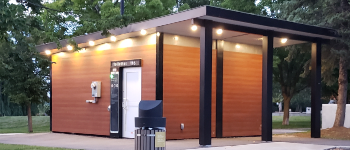How To Make Sure Your Playground is ADA Compliant
Jun 24







Feb 09
When a child steps into a playground or park, they enter a world of possibility. These spaces offer more than just play equipment — they're a cornerstone of community, learning, and growth.
But how do we ensure that everyone, regardless of ability, can share in this experience? The journey begins with understanding the distinction and connection between inclusivity and ADA compliance. Let's explore this relationship, illustrating how you can create environments that welcome all.
The Americans with Disabilities Act (ADA), signed into law on July 26, 1990, sets the stage for accessibility in public spaces, including parks and playgrounds. ADA compliance is a legal requirement that aims to eliminate barriers for individuals with disabilities, including employment, transportation, public accommodations, communications, and state and local government programs and services.
In 2010, the ADA released standards for accessible design to help provide clear guidelines for parks and playgrounds. It covers a wide range of criteria, from the size of pathways to the accessibility of play equipment and other amenities — from the parking lot to the edge of the play area. Compliance ensures that those with physical and sensory disabilities can access and enjoy public play spaces safely and independently.
Read More: How To Make Sure Your Playground is ADA Compliant
Inclusivity, while encompassing ADA compliance, stretches beyond to embrace a broader spectrum of needs, including emotional, social, and cognitive aspects. It's about creating spaces where everyone feels valued and included regardless of ability, age, or background.
An inclusive playground or park is designed with the understanding that every child is unique, fostering an environment where all children can play together in a rich, engaging, and educational setting. The inclusion created by these parks and playgrounds encourages children, adults, and families to experience the benefits of playing together.
Accessible equipment plays a pivotal role in marrying ADA compliance with inclusivity. It's not just about having wheelchair-accessible swings or ramps — it's about selecting and designing play and other elements that cater to a wide range of abilities. This includes sensory play elements for children with autism, quiet zones for those who may get overwhelmed by too much stimulation, and interactive play units that encourage social interaction among children of different abilities.
Examples of inclusive playground structures that allow this include sensory wave climbers, harmonic chimes, sensory spinning seats, rockin' robins, and inclusive sky run zip tracks.
To cater to the whole child, playgrounds and parks must offer physical, social, emotional, sensory, communication, and intellectual development opportunities. This holistic approach recognizes play as a critical aspect of childhood development, serving as a foundation for learning, problem-solving, and social interaction.
By incorporating diverse play options, such as tactile panels, musical instruments, and imaginative play structures, we can support the growth of every child, ensuring that each one has the chance to thrive.
Designing an inclusive playground or park requires a thoughtful approach that considers the varied needs of all potential users. It starts with community input, gathering insights from children, parents, and experts in inclusivity and accessibility. Key elements include:
Download Now: The Ultimate Guide to Inclusive Playgrounds
Inclusive parks and playgrounds are more than just play spaces. They're vital community hubs that foster understanding, empathy, and friendship among diverse groups. They send a powerful message that everyone belongs and has value, and helping all children learn, grow, and have fun matters. By prioritizing inclusivity and ADA compliance, we meet legal obligations and contribute to a more compassionate and inclusive society.
Read More: How to Build an Inclusive Playground
While ADA compliance is a critical foundation for accessibility, true inclusivity in parks and playgrounds requires a broader vision. It's about creating spaces that welcome everyone, celebrating diversity, and promoting equal opportunities for play, growth, and learning.
As we move forward into 2024 and beyond, more and more people will commit to designing playgrounds and parks that reflect the diversity of our communities, ensuring that every child can find joy, friendship, and adventure in their local play space.
Ready to help design a play space with everyone in mind? Reach out to our team and discuss how to incorporate inclusivity into your park or playground.